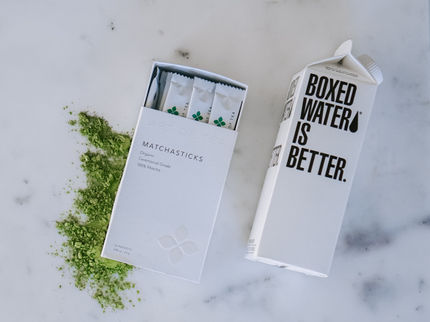Plastic teabags release microscopic particles into tea
Many people are trying to reduce their plastic use, but some tea manufacturers are moving in the opposite direction: replacing traditional paper teabags with plastic ones. Now, researchers reporting in ACS' environmental science & Technology have discovered that a soothing cup of the brewed beverage may come with a dose of micro- and nano-sized plastics shed from the bags. Possible health effects of ingesting these particles are currently unknown, the researchers say.

Photo by Morgan Sessions on Unsplash
Over time, plastic breaks down into tiny microplastics and even smaller nanoplastics, the latter being less than 100 nanometers (nm) in size. (For comparison, a human hair has a diameter of about 75,000 nm.) Scientists have detected the microscopic particles in the environment, aquatic organisms and the food supply, but they don't know yet whether they are harmful to humans. Nathalie Tufenkji and colleagues wondered whether recently introduced plastic teabags could be releasing micro- and nanoplastics into the beverage during brewing. They also wanted to explore effects of the released particles on small aquatic organisms called Daphnia magna, or water fleas, which are model organisms often used in environmental studies.
To conduct their analysis, the researchers purchased four different commercial teas packaged in plastic teabags. The researchers cut open the bags, removed the tea leaves and washed the empty bags. Then, they heated the teabags in containers of water to simulate brewing conditions. Using electron microscopy, the team found that a single plastic teabag at brewing temperature released about 11.6 billion microplastic and 3.1 billion nanoplastic particles into the water. These levels were thousands of times higher than those reported previously in other foods. In another experiment, the researchers treated water fleas with various doses of the micro- and nanoplastics from teabags. Although the animals survived, they did show some anatomical and behavioral abnormalities. More research is needed to determine if the plastics could have more subtle or chronic effects on humans, the researchers say.
Most read news
Organizations
Other news from the department science

Get the food & beverage industry in your inbox
By submitting this form you agree that LUMITOS AG will send you the newsletter(s) selected above by email. Your data will not be passed on to third parties. Your data will be stored and processed in accordance with our data protection regulations. LUMITOS may contact you by email for the purpose of advertising or market and opinion surveys. You can revoke your consent at any time without giving reasons to LUMITOS AG, Ernst-Augustin-Str. 2, 12489 Berlin, Germany or by e-mail at revoke@lumitos.com with effect for the future. In addition, each email contains a link to unsubscribe from the corresponding newsletter.



























































